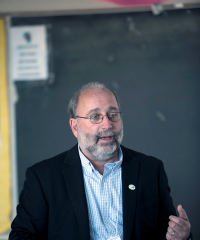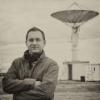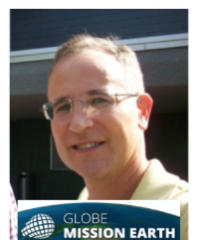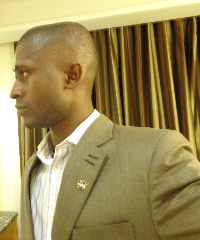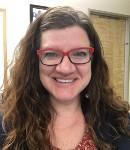Community Blogs
Community Blogs
Discover how the GLOBE community is engaging in all things GLOBE through the community blog posts below.
Learn how to create a GLOBE community blog post.
Filter By:
Blogs List
The term “won in a landslide” is particularly troubling to me because when a landslide happens, the kind that I study at least, there are seldom “winners”. My research looks at how rainfall interacts with the environment to cause natural disasters like flooding and landslides. Knowing where, when and how much rain or snow is falling is key to understanding where we may have extreme events that can impact people.
If you consider where we get a lot of rainfall, like some of our tropical regions…
...and combine that with areas that have the right factors to cause a landslide, such ...
Read More »
Posted in:
Hi, my name is Anna Wilson. I moved to Asheville, NC in the summer of 2004, just before several floods caused by tropical storms left me without power for more than a week. This spurred my previously casual interest in the weather to become an obsession that eventually prompted me to go back to school. Here I am with a PARSIVEL disdrometer (an instrument that measures the size and velocity of particles that pass through its sampling area), after I completed my bachelor’s degree in Atmospheric Science and started working towards my PhD in Environmental Engineering:
(photo credit: ...
Posted in:
WOW! If you are not amazed by this GPM Data Visualization loop, you should be!
( www.youtube.com/embed/ILNC7IdyWVU?enablejsapi=1&rel=0 )
Earth SySTEM is an approach to STEM Education that utilizes the current and future technological infrastructure of satellite imagery, remote sensing, and computer visualizations, and data archives in the study of Earth as a System .
So the question becomes, besides being pretty pictures, what else can students do with these types of satellite images, remote sensing and computer visualizations? There are many ...
Posted in:
I was born and raised in Michigan’s Upper Peninsula. If you’re unfamiliar with this extreme northern region of Michigan, it is meteorologically famous for its snow. Lots of snow. Insane amounts of snow. Sled-from-your rooftop piles of snow (see below image). Driving a car in this winter wonderland is difficult since pavement is merely a rumor on most streets from November through April. While snow provides many anxious driving moments, it is also cherished for creating breathtaking winter landscapes and for providing a wide variety of winter outdoor ...
Posted in:
Chances are that if you are reading this blog you are interested in bringing the exciting world of satellites and remote sensing into your classroom. Over the past five decades NASA and NOAA have archived satellite imagery and datasets and there is high interest in educators using these resources from both agencies. However, the challenge to the precollege community over the years has been one of both acquiring the technical skills to retrieve such imagery and data, and having the computer power to acquire and store such large files. The good news is that while aerospace engineers ...
Posted in:
The Palmyra Cove Nature Park is a 250 acre open space in New Jersey. The park is located on the Delaware River about 7 miles north of Philadelphia, PA. You can check the site out by using Google Earth … (40 N, 75 W).
There are various land cover types, resulting in varying ecosystems within the park. There is a tidal cove (with wetlands), forest, river/beach, and an Army Corps of Engineers dredge cell. The South Jersey/Eastern Pennsylvania/Delaware region, known as the Delaware Valley, is an interesting and often tricky forecast region, even for the National weather Service (NWS). It ...
Posted in:
Weather fascinates people and it is something we talk about every day. It is interesting to note that we mostly complain about the weather: too cold, too hot, too wet. For some reason, we do not acknowledge the weather when there is a sunny and comfortable day to do outdoor activities. We get quickly disappointed if the weather does not meet the forecast, especially if the forecast was sunny but precipitation falls from the sky.
First, what is precipitation? Precipitation is defined as any product of condensation of atmospheric water vapor that falls under ...
Posted in:
So, what if I told you that the water you drink today is the same water dinosaurs drank over one hundred million years ago? Yep, the same amount of water has been circulating the globe in what we call “The Hydrologic Cycle” (also known as the Water Cycle). But don’t worry, you will not catch some dinosaur-disease by drinking it. Water in the Hydrologic Cycle has the ability to evaporate from the land and ocean surfaces and travel large distances as water vapor, only to fall down on the ground as precipitation (rain and snow). The same water later travels on the surface as streams and ...
Posted in:
There have been 28 schools that have entered data associated with the GLOBE Surface Temperature Field Campaign for a total of 782 observations. The number of observations for a school is in parenthesis.
Al-Fath Secondary School at Abha, Saudi Arabia
Brazil High School, Tinidad and Tobago (18) – Thank you Mr. Ali
Camanche Elementary School, Iowa, USA
Chartiers-Housgon Jr./Sr. High School, Pennsylvania, USA (8)– Thanks Gary
Chia-Yi Girls Senior High School, Taiwan (9)
Dr. Bessie Rhodes School of Global Studies, Illinois, USA, 8 different sites (41)
Feng-Shan Senior High ...
Posted in:
My passion towards Global Precipitation Measurement Mission started when I visited GPM Clean Room at Goddard Space Flight Centre in August 2013 during 18 th GLOBE Annual Partner Meeting in Maryland, United States. Having received a grant from the National Science Foundation (NSF) through University of Toledo, Ohio to participate in the event gave me reasons to maximize the opportunity. As a scientist from Nigerian Space Agency, this opportunity gave a rare privilege to contribute to the development of Environmental Education (EE) in my resource-constrained country and the world at large. ...
Posted in:
Field Campaigns:
GPM
Hi GLOBE surface temperature enthusiasts. The first week of the GLOBE Surface Temperature campaign (plus a couple days) is over. I took at look through all of the data that has been submitted so far. The field campaign looks to be a great success again. I greatly appreciate all of your hard work. 17 schools have entered data so far from 4 countries.
The number of observations for a school is in parenthesis.
Sekundarschule Uzwil, Switzerland (2) – Thanks Markus
Shazar Intermediate School, Israel (12)
Al-Fath Secondary School at Abha, Saudi Arabia (2)
Princeton ...
Posted in:
Citizen science is scientific research conducted by amateur or nonprofessional scientists. Formally, citizen science has been defined as "the systematic collection and analysis of data; development of technology; testing of hypotheses; and the dissemination of the resulting information by researchers on a primarily avocational basis. When students do science, it is citizen science. This is true when students take measurements and report their data or analyze data taken by themselves and others. It is particularly true when they complete research projects by reaching evidence-base ...
Posted in:
GLOBE Surface Temperature Field Campaign
December 1 to December 31, 2014
The GLOBE Program will host the annual surface temperature field campaign from December 1 to December 31, 2014. This is a great opportunity to work as a community with schools around the world on a common research project. Students have used the surface temperature field campaign data to do research projects. And, one of my graduate students has been looking at the data and found that a strong warming due to urban areas is observable in the student data. It is my hope that continued expansion of the ...
Posted in:
In the early 1980’s, I chaired a group of scientists exploring the idea of a comprehensive satellite mission to study all aspects of the global environment. The group was diverse with expertise covering the range of Earth science disciplines from geology, ecology, oceanography, limnology, glaciology, and atmospheric science and their various sub-disciplines. Their first recommendation was take today’s data today.
In all of Earth science there is the recognition that we have only one Earth to study. How Earth works is revealed by watching it change in a comprehensive manner and ...
A version of this blog was originally posted on November 14, 2012 .
If you have been listening to the news or following along with weather and climate web pages, you have probably heard the term "ENSO." ENSO, or El Niño-Southern Oscillation, is a quasi-periodic climate pattern that occurs in the tropical Pacific Ocean. When the conditions change, the atmosphere responds in many different ways. In certain locations, it is cloudier and it rains more, while in others it’s clear and dry. Scientists are forecasting El Niño conditions to start ...
Posted in:
Curriculum:
SCIENCE AND MATH
GLOBE Science Topics:
CLIMATE
Investigation Areas:
ATMOSPHERE
We had an incredible turn out at our (the GLOBE) table at the NOAA booth at the NSTA conference. It was great to meet so many teachers and curriculum directors with an interest in GLOBE. Thanks to everybody who took the time to stop by and learn about GLOBE.
For those people who did not get the Earth System Science Poster , we are very sorry. Please follow this link to get the PDF files so that you can print out the pages to use in your classroom. The page also has a complete poster that can be projected or printed, and the activities guide.
Expanding on the ESS poster ...
Posted in:
GLOBE Science Topics:
MEETINGS/CONFERENCES
News Topics:
TRAINING
Primary Audience:
PARTNERS
TEACHERS
Beste mensen,
Het effect van de uitzonderlijk zachte winter op de natuur is ook bij de media niet onopgemerkt gebleven. In de uitzending van het KRO programma Brandpunt op zondag 16 maart komt het onderwerp aan bod. Zie http://gemi.st/KN_1656575 . Het item begint op 23:20. Verder zat ik op zondag 9 maart in het programma Jinek op Zondag. Dit is terug te zien op http://gemi.st/KN_1656819 . Tenslotte zat ik op woensdag 19 maart in het EO-programma 'Melk en Honing'. De uitzending is terug te bekijken op http://gemi.st/EO_101212300 .
Vriendelijke groeten,
Arnold
Posted in:
Field Campaigns:
SEASONS AND BIOMES
GLOBE Science Topics:
CLIMATE CHANGE
Learning Activities:
LAND COVER/BIOLOGY
Primary Audience:
TRAINERS
TEACHERS
STUDENTS
PARTNERS
SCIENTISTS
Beste GLOBE leerlingen in Nederland,
Jullie kunnen mij allemaal helpen de natuur te onderzoeken.
Groet,
Arnold
Posted in:
Now that the new year is upon us, we can take a look at the GLOBE Surface Temperature field campaign from December 2013. I think it went very well. Tens of schools and thousands of students participated. Valuable data was collected that students can use to create research projects.
Here are the schools that have entered data so far.
David Wooster Middle School, Connecticut
Bellefontaine High School, Ohio – Hi Dennis
Birchwood School, Ohio – Hi Linda
Main Street Intermediate School, Ohio – Hi Marcy
Archbold Middle School, Ohio
The University of Toledo, Ohio – These are ...
Posted in:
This week we welcome long-time friend of GLOBE, Dr. Margaret LeMone, Chief Scientist for the GLOBE Program from 2003-2009, as our guest blogger. Dr. LeMone is currently working in the field of weather and cloud formation at the National Center for Atmospheric Research (NCAR).
Originally posted at http://spark.ucar.edu/blog/measuring-rainfall on September 23, 2013.
Dr. Margaret LeMone,
Credit: UCAR
Dr. Margaret LeMone is an NCAR Senior Scientist who studies weather and cloud formation. For more information about her research, visit Dr. LeMone's home page .
A ...
Posted in:
GLOBE Science Topics:
BACKYARD SCIENCE
Investigation Areas:
PRECIPITATION
—
20 Items per Page








